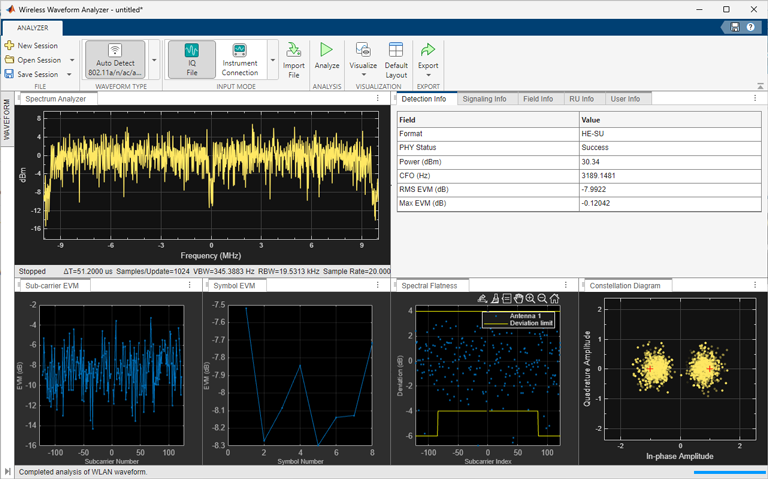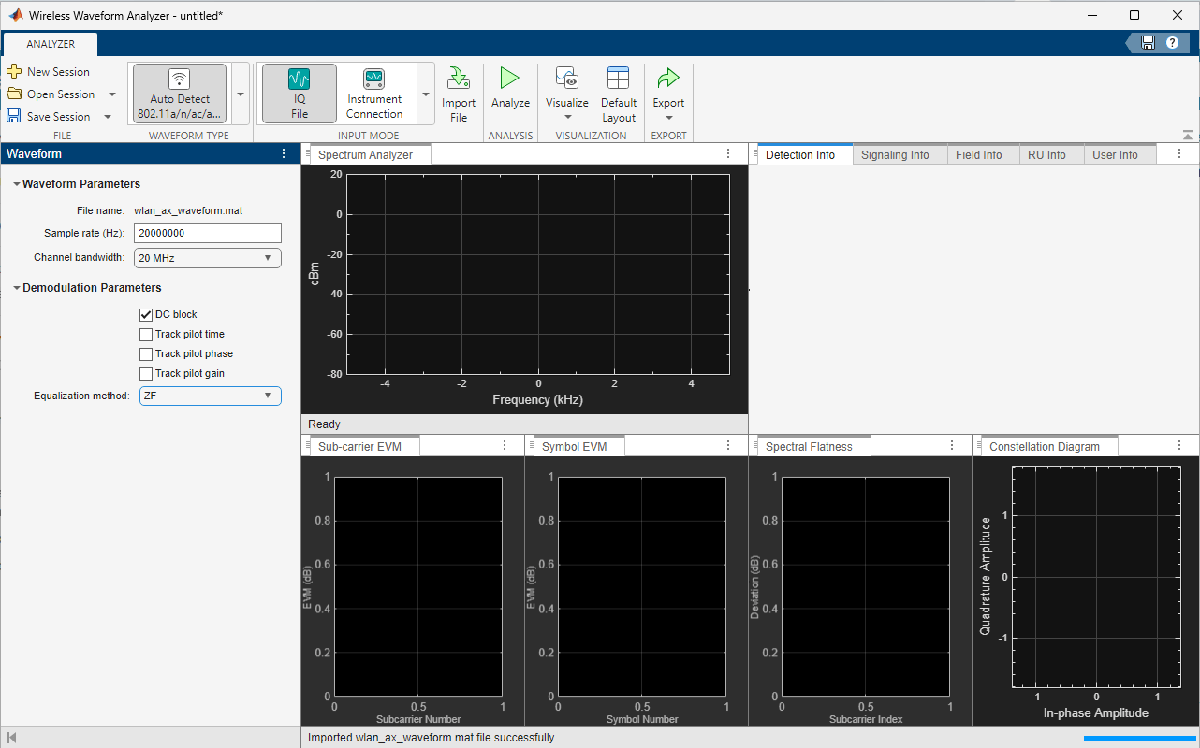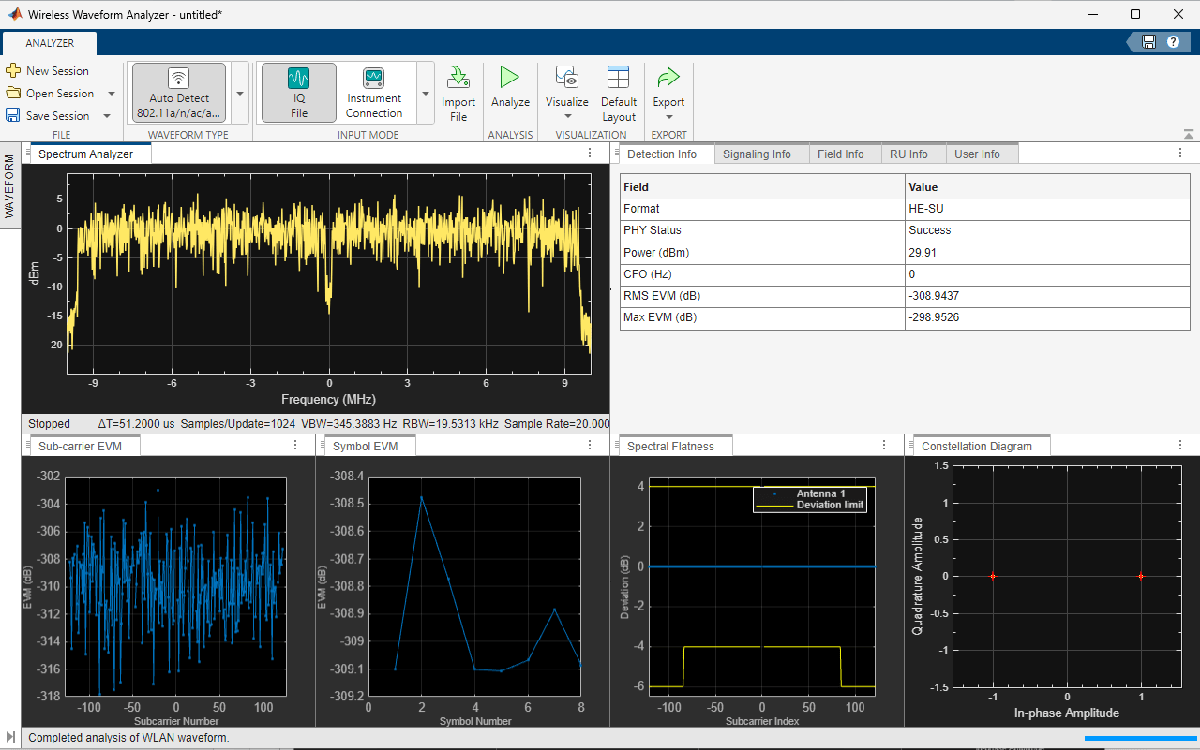Wireless Waveform Analyzer
Description
The Wireless Waveform Analyzer app enables you to blindly detect, decode, analyze an IEEE 802.11a™, IEEE 802.11n™, IEEE 802.11ac™, IEEE 802.11ax™, or IEEE® 802.11be™ packet in an imported waveform. Using this app, you can:
Import waveforms from baseband files (
.bb) or MATLAB files (.mat). The app requires the imported waveform to have fields labeled:waveform— Time-domain signal, specified as a complex-valued NS-by-NR matrix, where NS is the number of time-domain samples and NR is the number of receive antennas.fs— Waveform sample rate in Hertz.
If the imported waveform does not contain a field labeled
waveform, the app uses the first field that is a vector or a 2D matrix of a double or single data type with complex number support as the input waveform. When a field labeledfsis not present, the app uses the current value of the Sample rate field in its Waveform Parameters section.Detect an IEEE 802.11a™, IEEE 802.11n™, IEEE 802.11ac™, IEEE 802.11ax™, or IEEE 802.11be packet in an imported waveform.
Capture waveforms using a connected spectrum analyzer instrument that supports the virtual instrument software architecture (VISA) interface (requires Instrument Control Toolbox™).
Configure demodulation parameters to demodulate the waveform.
Analyze the demodulated waveform.
Visualize waveforms. You can choose from various visualization options such as spectrum analyzer, constellation diagram, and analysis summaries.
Export the results to files, or save them as workspace variables.
The Wireless Waveform Analyzer is capable of detecting, decoding, and analyzing a single packet within a waveform. For detecting, decoding, and analyzing multiple packets within a waveform, see the Recover and Analyze Packets in 802.11 Waveform example. Additionally, this example supports signal reception with a software defined radio, offers pilot time tracking for lengthy waveforms, and supports the retrieval of medium access control (MAC) frame contents.
Open the Wireless Waveform Analyzer App
MATLAB® Toolstrip: On the Apps tab, under Signal Processing and Communications, click the app icon.

MATLAB Command Prompt: Enter
wirelessWaveformAnalyzer


